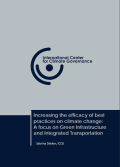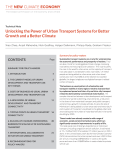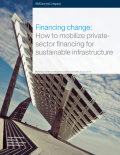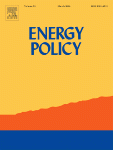
Green infrastructure and integrated transportation are the two dominant green best practices that cities around the world are implementing and that research related to the climate change impacts of extreme temperatures and air pollution advocate for. Are these policies enough to address climate change and its impacts on human health, now and in the future? The answer to this question depends on whether cities choose to continue with the same status quo policies or develop new policies in the light of climate change.

Sustainable transport systems are crucial for underpinning the economic performance and prosperity of nations. They are also critical for tackling global climate change and reducing local air pollution. This is particularly the case in the world’s urban areas.
This paper provides an overview of the available evidence on the link between the effectiveness of transport systems and economic, social and environmental performance. It starts with a short overview of the main trends in urban transport, and then covers the costs of the current model of urban development and transport use and the benefits of an alternative model. It discusses potential tipping points in transport mobility worldwide and barriers to scaling up positive change. Finally it concludes with an overview of international collaborative initiatives on urban transport and with some recommendations for policy-makers.

Sustainable infrastructure is at the nexus of growth, poverty reduction and environmental sustainability, and is therefore important to making progress toward the 2015 Sustainable Development Goals, which aim to end poverty by 2030.
The report Financing Change: How to Mobilize Private-Sector Financing for Sustainable Infrastructure examines how to create the financing environment that could create a step change in private-sector capital flows into sustainable infrastructure. By evaluating and analyzing the global demand for infrastructure and the current lack of enough supply of finance, the report offers an overview of solutions to boost private-sector investment in sustainable infrastructure in a way that creates value for investors as well as improving climate and development outcomes.

Cities play a vital role in the global climate change mitigation agenda. City population density is one of the key factors that influence urban energy consumption and the subsequent GHG emissions. However, previous research on the relationship between population density and GHG emissions led to contradictory results due to urban/rural definition conundrum and the varying methodologies for estimating GHG emissions. This work addresses these ambiguities by employing the City Clustering Algorithm (CCA) and utilizing the gridded CO2 emissions data. Our results, derived from the analysis of all inhabited areas in the US, show a sub-linear relationship between population density and the total emissions (i.e. the sum of on-road and building emissions) on a per capita basis. Accordingly, we find that doubling the population density would entail a reduction in the total CO2 emissions in buildings and on-road sectors typically by at least 42%. Moreover, we find that population density exerts a higher influence on on-road emissions than buildings emissions.
Recent discussions on the green economy in Tunisia happened at an opportune moment. The country currently faces increasing unemployment as well as increasing social and spatial inequalities and energy and environmental challenges; these are all matters of growing concern. It is therefore clear that Tunisia needs a new development model.
In this context, ECA’s report on Inclusive green economy and structural transformation in Tunisia explores the links and contribution of inclusive green economy policies to structural transformation in Tunisia. Taking into account the historical, cultural and political backdrop of the country, the report highlights the challenges faced by Tunisia in developing its green economy, in structural transformation and in sustainable development. The report also identifies opportunities and makes recommendations. This report is only available in French.
